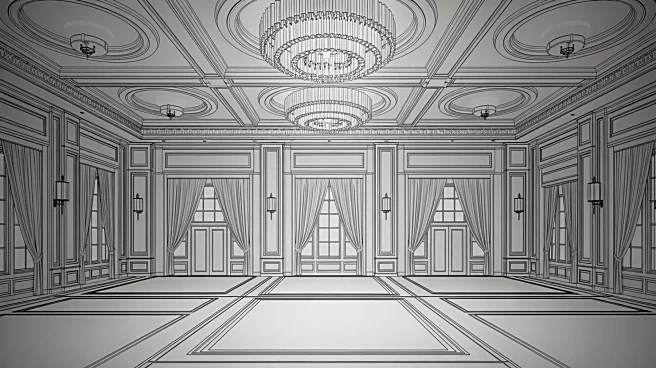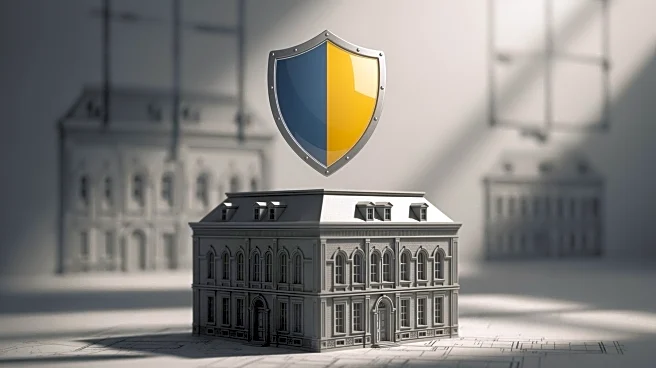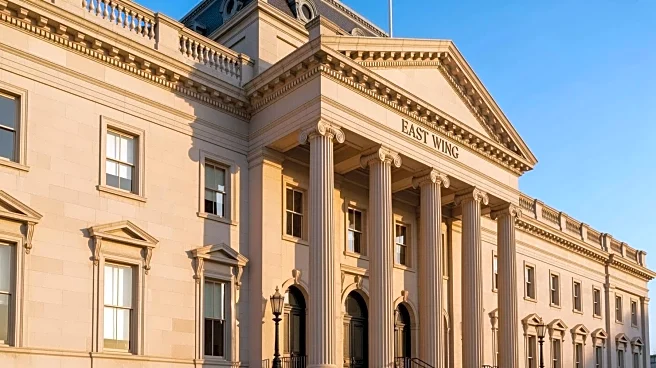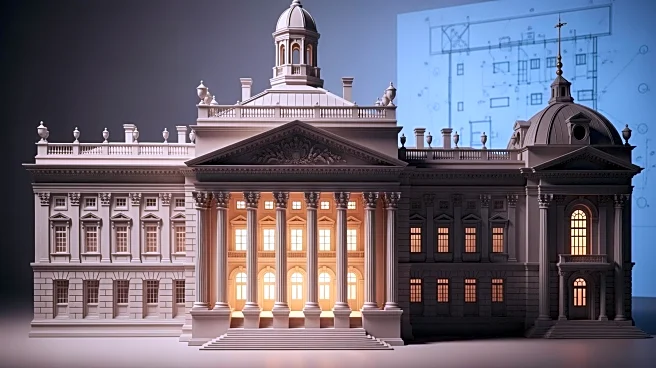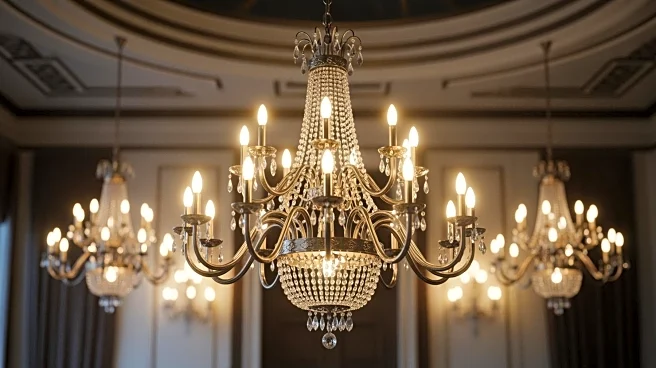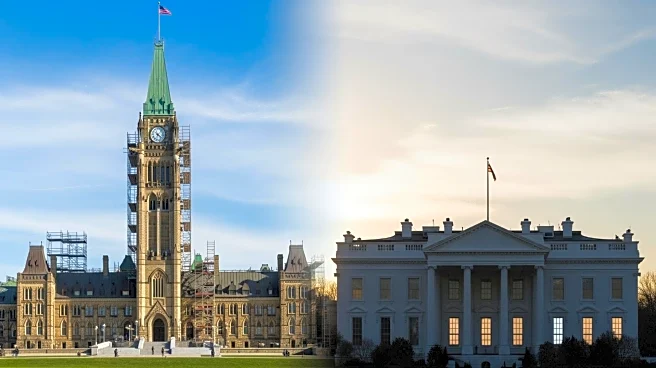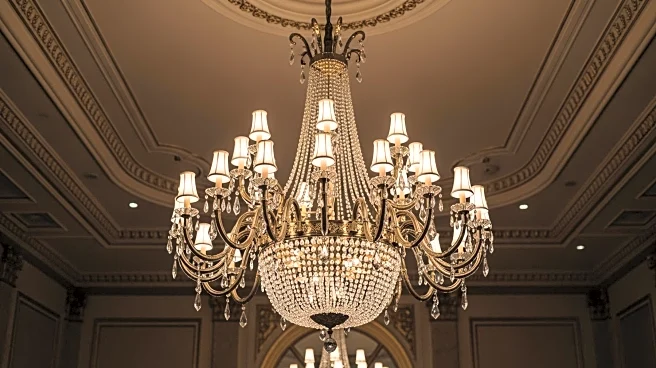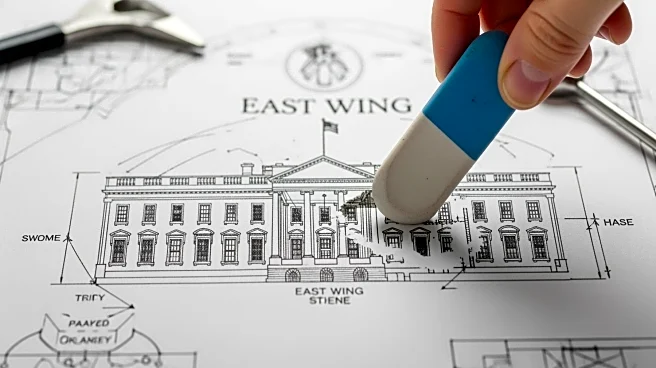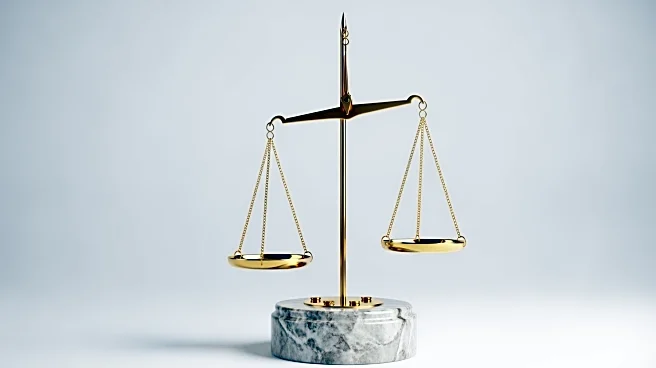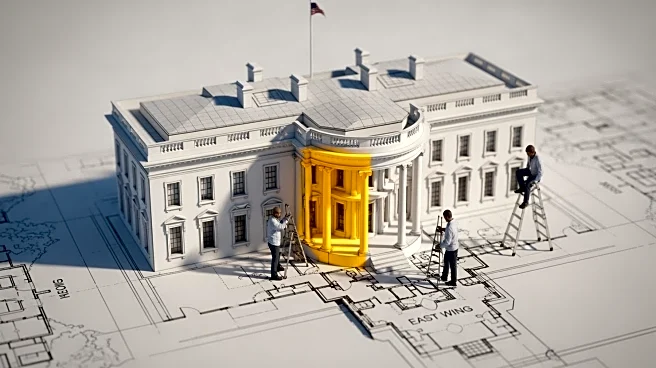What's Happening?
The White House is set to undergo significant changes with the planned demolition of the East Wing. President Trump has announced the construction of a new $300 million ballroom, which necessitates the removal
of the existing structure. This development marks a major architectural shift within the presidential complex, aiming to enhance its facilities. The East Wing, traditionally housing offices and event spaces, will be replaced by a modern ballroom designed to accommodate large gatherings and official events. The project reflects President Trump's vision for upgrading the White House's infrastructure.
Why It's Important?
The demolition and subsequent construction of a new ballroom at the White House represent a substantial investment in the presidential estate. This move could impact the way official events are hosted, potentially increasing the capacity and grandeur of such occasions. The financial commitment of $300 million underscores the administration's focus on enhancing the White House's functionality and aesthetic appeal. This development may also influence public perception of the administration's priorities, as it allocates significant resources to a project within the presidential residence.
What's Next?
The demolition of the East Wing is expected to commence soon, with construction plans for the ballroom already underway. Stakeholders, including government officials and contractors, will likely be involved in the planning and execution phases. The project may face scrutiny regarding its cost and necessity, prompting discussions among political leaders and the public. As construction progresses, updates on the project's timeline and impact on White House operations will be closely monitored.
Beyond the Headlines
The decision to demolish part of the White House for a new ballroom raises questions about historical preservation and the balance between modernization and maintaining tradition. The East Wing has been a part of the White House's history, and its removal may spark debates on preserving historical architecture versus adapting to contemporary needs. This development could also set a precedent for future renovations within the presidential estate, influencing how historical sites are managed in the U.S.
